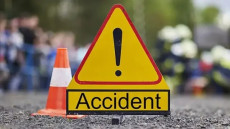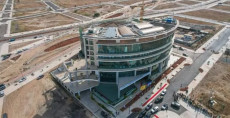- Outer Ring Road is an important road that connects residential places to major highways in Nairobi and eases congestion and traffic; however, it has transformed into the city's deadliest stretch. What was once hailed as a game-changing highway has become a symbol of neglect and danger. A report by the National Transport and Safety Authority (NTSA) indicates that it has claimed more lives than any other road in Kenya since its completion. The poorly maintained and vandalized guardrails, meant to save lives, now stand as hazards themselves, leading to catastrophic accidents, injuries, and fatalities.
Outer Ring Road is an important road that connects residential places to major highways in Nairobi and eases congestion and traffic; however, it has transformed into the city's deadliest stretch. What was once hailed as a game-changing highway has become a symbol of neglect and danger.
A report by the National Transport and Safety Authority (NTSA) indicates that it has claimed more lives than any other road in Kenya since its completion. The poorly maintained and vandalized guardrails, meant to save lives, now stand as hazards themselves, leading to catastrophic accidents, injuries, and fatalities.
Originally designed as a modern highway with features like a Bus Rapid Transit (BRT) system, Outer Ring Road was meant to ease congestion and improve connectivity. Instead, it has created calamity as pedestrians cross the road, motorcyclists ride on the wrong side, creating confusion, and handcart pushers operate dangerously along the road, posing immense danger.
Damaged or missing guardrails have turned sections of the road into death traps, with jagged metal supports resembling spears ready to rip through vehicles.
The repercussions of the negligence have been evident on several occasions. For example, in 2019, a Mercedes-Benz collided with a guardrail along Outer Ring Road, which impaled the car, slicing through the bonnet and passenger seat before exiting the rear window.
Read More
In an accident that claimed the life of former Nyeri Governor Wahome Gakuru in 2017, whose car was speared by a guardrail, leaving behind a grim testament to the dangers of defective infrastructure.
Vandalism and poor maintenance are the primary culprits. Guardrails are stolen for scrap metal, leaving critical sections unprotected. The Kenyan government has failed to maintain the road and conduct inspection; the Kenya Urban Roads Authority (KURA) has been tasked with the responsibility of maintaining the road, unlike the Kenya National Highways Authority (KeNHA), which conducts regular patrols and repairs. The lack of oversight has turned Outer Ring Road into a ticking time bomb.
The neglect goes beyond safety. It also affects the economy; as such, roads increase the cost of doing business, delaying economic development. Poorent, and compromises security. The high poverty rate and unemployment of youths have drastically contributed to vandalism of the infrastructure, leaving it devastated. The risks are dire.
Defective guardrails lead to catastrophic injuries, including amputations and paralysis, depending on the angle of impact and speed. The African Development Bank estimates that unsafe infrastructure diverts billions from crucial sectors like education and healthcare.
There's no quick fix, but a few steps could make a difference. First, KURA must prioritize regular inspections and repairs of Outer Ring Road. KeNHA's patrol system offers a template: consistent monitoring and immediate action to address damages.
Second, combating vandalism requires addressing its root causes. Policies targeting poverty reduction and youth empowerment can dissuade individuals from dismantling infrastructure for scrap. As experts note, providing sustainable income opportunities makes vandalism a less attractive option.
Lastly, there's a need for accountability. Kenyans deserve better than a patchwork of broken promises and neglected safety measures. Every damaged guardrail is a silent indictment of the authorities' failure to act.
Outer Ring Road's current state is a tragedy of avoidable consequences. It's time for policymakers, road authorities, and citizens to unite and demand change. This road should represent connectivity and progress, not fear and death.
As Nairobians navigate this perilous stretch, the question remains: will we prioritize lives over indifference or let this deadly narrative continue?












